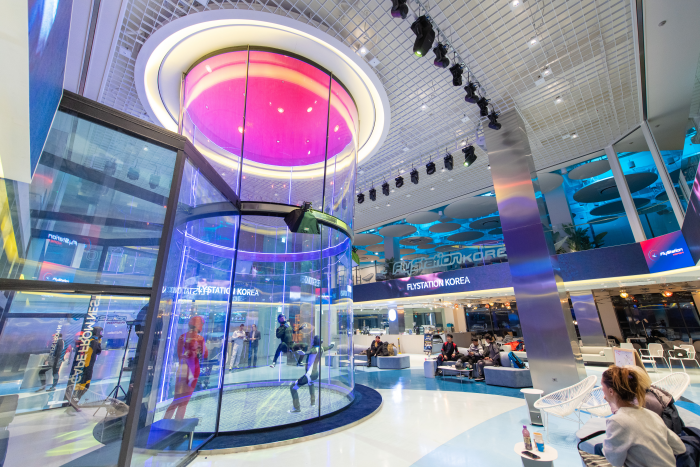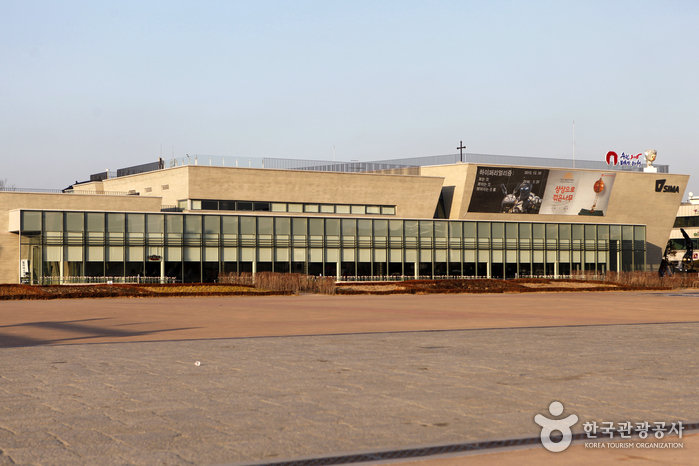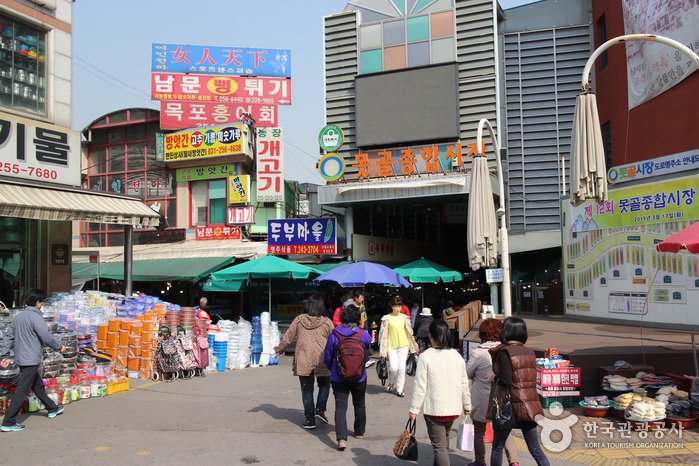Wolhwawon Garden (월화원)
9.3Km 2024-03-20
399 Dongsuwon-ro, Paldal-gu, Suwon-si, Gyeonggi-do
+82-31-228-4181
Wolhwawon Garden is nestled in Hyowon Park of Suwon and features elements that are heavily influenced by Chinese culture. The garden was established as a result of a special memorandom of agreement (MOU) signed in 2003 between the provincial governments of Gyeonggi-do in Korea and Guangdong in China, in appreciation of the two city's cooperative relationship. It boasts traditional gardens and architecture, man-made lakes and waterfalls designed in the Cantonese style.
GAMMEEOK (감미옥(감미옥본점))
9.3Km 2024-02-19
181, Tancheon-ro, Bundang-gu, Seongnam-si, Gyeonggi-do
This restaurant, with 33 years of history, serves Seolleongtang (Ox bone soup). The soup is rich and deep in flavor, thanks to the bones that are boiled for more than 12 hours. It pairs perfectly with Baechukimchi (Kimchi) and Kkakdugi (Diced radish kimchi), both ripened to perfection and served on the side. The soup is presented in a hot pot. To mitigate the oily flavor, add plenty of minced green onions, and season with salt and pepper to taste. The meat in the soup is tender and has a clean taste.
Olive Young - Dongsuwon Branch [Tax Refund Shop] (올리브영 동수원)
9.4Km 2024-04-19
1F, 202, Gwongwang-ro, Paldal-gu, Suwon-si, Gyeonggi-do
-
Leenakyeong Songtan Budaejjigae (이나경송탄부대찌개)
9.5Km 2024-02-06
47 Hyowon-ro 307beon-gil, Paldal-gu, Suwon-si, Gyeonggi-do
Leenakyeong Songtan Budaejjigae specializes exclusively in its signature dish, a Special budae jjigae (special sausage jjigae). The jjigae is generously filled with smoked sausages, ham, assorted sausages, and minced meat, arranged around the hot pot's edge. Boasting an ox bone broth base, the jjigae offers a spicy yet refreshing and savory taste. Complementing the main dish are side dishes like kimchi and bean sprout salad. The restaurant serves diners in portions designed for two or more.
SI Jaju - Suwon Ingye Branch [Tax Refund Shop] (SI 자주 수원인계)
9.5Km 2024-04-19
197, Gwongwang-ro, Paldal-gu, Suwon-si, Gyeonggi-do
-
Fly Station (플라이스테이션)
9.5Km 2025-10-27
521 Seongsan-ro Pogok-eup, Cheoin-gu, Yongin-si, Gyeonggi-do
It is an indoor skydiving facility where you can fly through the air with strong winds of up to 360 km/h in a transparent wind tunnel. Entertainment programs such as 'My Little Old Boy' and 'Running Man' were filmed. Unlike the outdoors, you can enjoy a more free feeling by not wearing parachute or other equipment. Before the experience, safety education is conducted, the wind is adjusted according to the weight, and safety devices are installed on the floor, so let's enjoy a free flight without any worries. Helmets, goggles, suits, and shoes are also provided on site.
CHA Bundang Medical Center (차의과학대학교 분당차병원)
9.5Km 2025-10-23
59 Yatap-ro, Bundang-gu, Seongnam-si, Gyeonggi-do
Founded in 1960, CHA Hospital has grown into a global medical institution, delivering exceptional healthcare across 91 facilities in 7 countries. With more than six decades of medical expertise, we are committed to providing world-class medical services.
CHA Bundang Medical Center is the largest and most prominent hospital within the CHA Medical Center network in Korea. As our flagship hospital, it offers patient-centered care that meets international standards. With over 40 specialized centers, we provide comprehensive and personalized treatment services, ranging from routine checkups to advanced infertility treatments and the management of severe conditions, including female cancers.
Every year, CHA Hospital cares for 120,000 outpatients and 300,000 inpatients. Our International Medical Center ensures that foreign patients receive customized, high-quality care tailored to their needs.
Suwon Museum of Art (수원시립미술관)
9.5Km 2025-05-22
833 Jeongjo-ro, Paldal-gu, Suwon-si, Gyeonggi-do
Suwon Museum of Art is a cultural and artistic space located in the plaza of Hwaseong Haenggung Palace in Suwon. The building, which embodies the harmony of modernity and nature, includes exhibition halls, a library, classrooms, and a cafeteria. It serves as a place where the spirit of Hwaseong meets contemporary art, offering high-quality exhibitions, immersive interactive displays, and unique showcases focusing on the Suwon region.
Motgol Market (못골종합시장)
9.5Km 2025-10-23
10-12 Suwoncheon-ro 258beon-gil, Paldal-gu, Suwon-si, Gyeonggi-do
+82-31-246-5638
Motgol Market features a variety of shops selling side dishes and ingredients ranging from fresh and dried fish to meat, vegetables, rice cake, and more. The sells make great efforts in promoting trust between merchant and customer, providing their products at the lowest prices with a friendly smile. The market stands as a representative culture market of Korea, thanks to the convinence in shopping and the affordable products.
◎ Travel information to meet Hallyu’s charm - TV series "Lovely Runner"
Motgol Market is where Sol and her mother shopped for groceries for her father’s memorial ceremony, with their playful bickering over the fruits for the ritual adding a heartwarming touch. The market is filled with affordable, high-quality food, making it a popular spot for both tourists and locals.
Suwon Chicken Street (수원통닭거리)
9.5Km 2025-05-22
16 Jeongjo-ro 800beon-gil, Paldal-gu, Suwon-si, Gyeonggi-do
Suwon Chicken Street, located in a small 100 m-long alley on Paldal-ro, Paldal-gu, Suwon, is where about 11 stores, ranging from the original store that opened in 1970 to new ones, serve fried whole chicken. It is the tradition of Suwon Chicken Street to pour oil into a large cauldron and fry chicken. The menu only consists of fried chicken and seasoned fried chicken, but they are gaining popularity for their savory taste, different from those of famous chicken brands. In Suwon Chicken Street, you can meet the granny of “Maehyang Tongdak,” who has been selling fried chicken in Suwon Chicken Street since the 1970s using the chicken she raised in a chicken coop on a stall, as well as the famous “Yongseong Tongdak" and “Jinmi Tongdak" in this alley. The chicken price is low, so you don't have to worry about it. Thanks to plentiful servings and unique taste, the shops on this street are crowded with customers from all over the country, including students, who come having heard of the place by word of mouth.

![Olive Young - Dongsuwon Branch [Tax Refund Shop] (올리브영 동수원)](http://tong.visitkorea.or.kr/cms/resource/49/2888049_image2_1.jpg)
![SI Jaju - Suwon Ingye Branch [Tax Refund Shop] (SI 자주 수원인계)](http://tong.visitkorea.or.kr/cms/resource/32/2889532_image2_1.jpg)



 English
English
 한국어
한국어 日本語
日本語 中文(简体)
中文(简体) Deutsch
Deutsch Français
Français Español
Español Русский
Русский